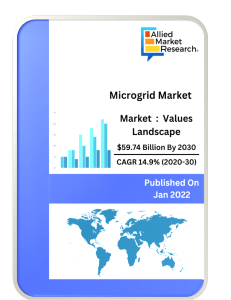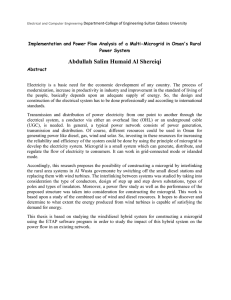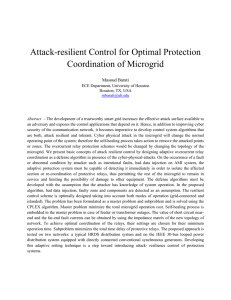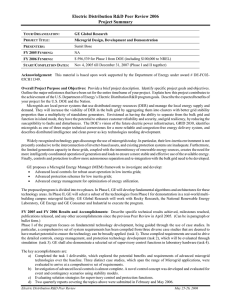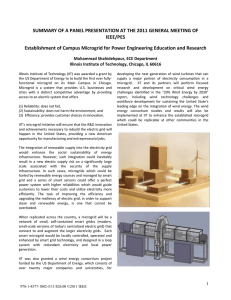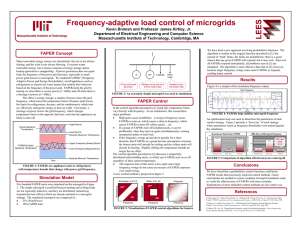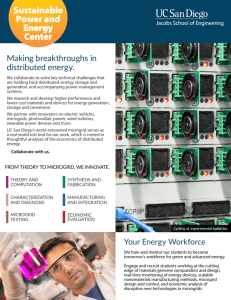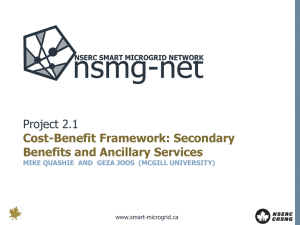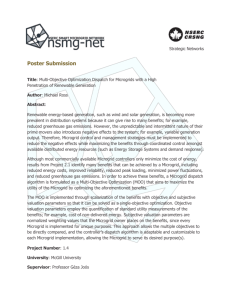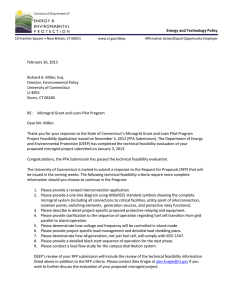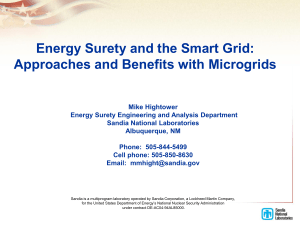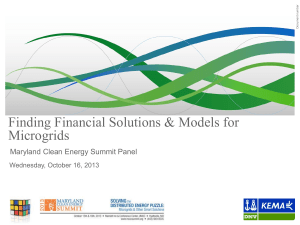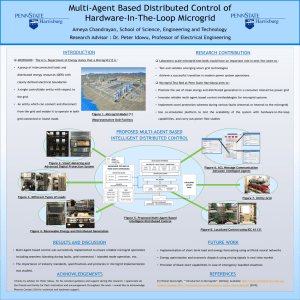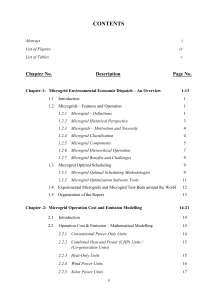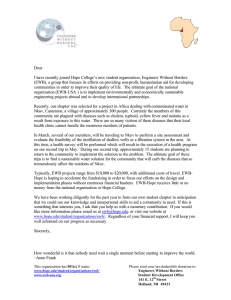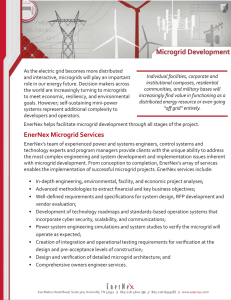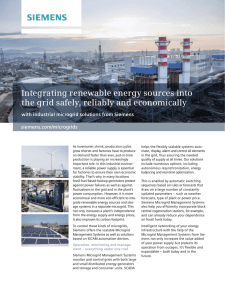The electrical power system consists of three major components
advertisement
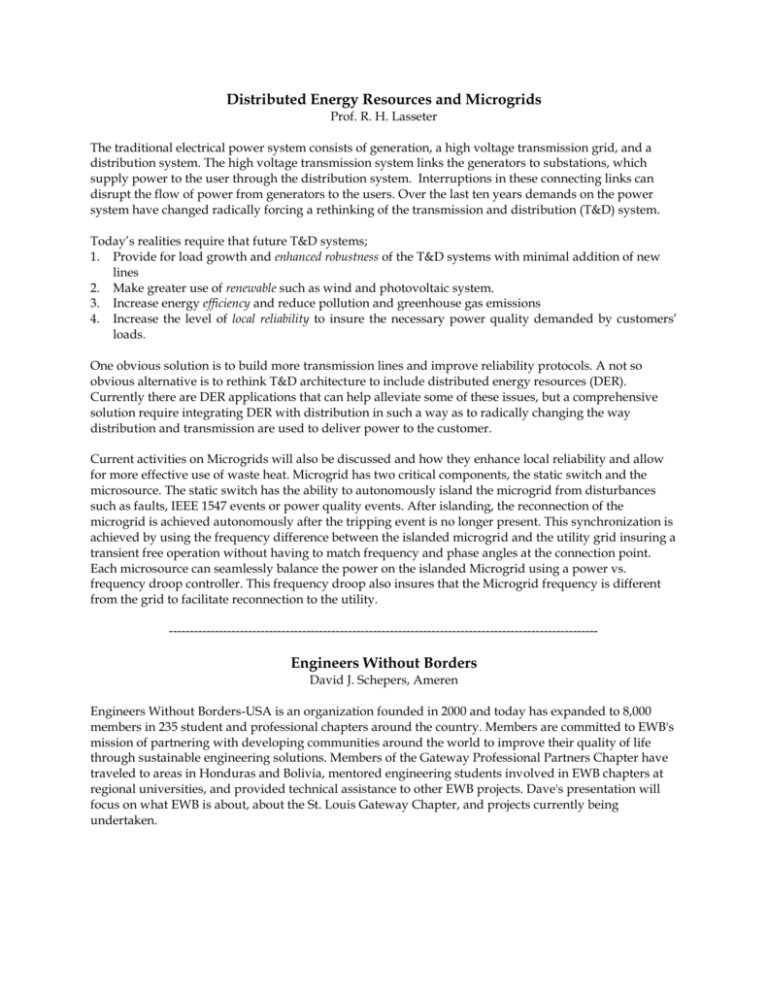
Distributed Energy Resources and Microgrids Prof. R. H. Lasseter The traditional electrical power system consists of generation, a high voltage transmission grid, and a distribution system. The high voltage transmission system links the generators to substations, which supply power to the user through the distribution system. Interruptions in these connecting links can disrupt the flow of power from generators to the users. Over the last ten years demands on the power system have changed radically forcing a rethinking of the transmission and distribution (T&D) system. Today’s realities require that future T&D systems; 1. Provide for load growth and enhanced robustness of the T&D systems with minimal addition of new lines 2. Make greater use of renewable such as wind and photovoltaic system. 3. Increase energy efficiency and reduce pollution and greenhouse gas emissions 4. Increase the level of local reliability to insure the necessary power quality demanded by customers’ loads. One obvious solution is to build more transmission lines and improve reliability protocols. A not so obvious alternative is to rethink T&D architecture to include distributed energy resources (DER). Currently there are DER applications that can help alleviate some of these issues, but a comprehensive solution require integrating DER with distribution in such a way as to radically changing the way distribution and transmission are used to deliver power to the customer. Current activities on Microgrids will also be discussed and how they enhance local reliability and allow for more effective use of waste heat. Microgrid has two critical components, the static switch and the microsource. The static switch has the ability to autonomously island the microgrid from disturbances such as faults, IEEE 1547 events or power quality events. After islanding, the reconnection of the microgrid is achieved autonomously after the tripping event is no longer present. This synchronization is achieved by using the frequency difference between the islanded microgrid and the utility grid insuring a transient free operation without having to match frequency and phase angles at the connection point. Each microsource can seamlessly balance the power on the islanded Microgrid using a power vs. frequency droop controller. This frequency droop also insures that the Microgrid frequency is different from the grid to facilitate reconnection to the utility. ------------------------------------------------------------------------------------------------------- Engineers Without Borders David J. Schepers, Ameren Engineers Without Borders-USA is an organization founded in 2000 and today has expanded to 8,000 members in 235 student and professional chapters around the country. Members are committed to EWB's mission of partnering with developing communities around the world to improve their quality of life through sustainable engineering solutions. Members of the Gateway Professional Partners Chapter have traveled to areas in Honduras and Bolivia, mentored engineering students involved in EWB chapters at regional universities, and provided technical assistance to other EWB projects. Dave's presentation will focus on what EWB is about, about the St. Louis Gateway Chapter, and projects currently being undertaken.



